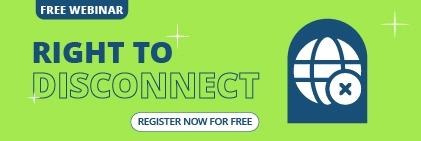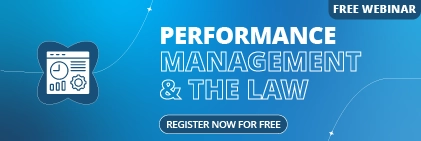Today’s workplace is evolving fast.
You might have a mix of remote, hybrid, and on-site staff. Your team could be spread across multiple locations or even countries.
Additionally, there are compliance rules, award rates, and changing labour laws to contend with.
That’s where workforce management software steps in – it helps you take control, stay compliant, and simplify the way you manage your people.
But here’s the catch: not all software is created equal. With numerous options available on the market, it can be challenging to determine which one truly meets your needs.
In this blog post, you’ll discover the top 10 features you need in a workforce management system.
Whether you’re managing a small team or running operations across multiple locations, these features will help you work smarter, reduce admin stress, and create a happier, more productive workforce.
What is Workforce Management Software?
Workforce management (WFM) software is a digital tool that helps businesses plan, track, and optimise how employees work.
It covers everything from creating rosters and tracking attendance to managing leave, monitoring performance, and ensuring compliance with labour laws.
Instead of juggling multiple spreadsheets or disconnected systems, a WFM platform brings everything together in one place.
Who Uses Workforce Management Software and Why
Workforce management software isn’t just for HR teams. It’s used by operations managers, team leaders, payroll officers, and even employees themselves.
- HR teams use it to manage rosters, leave requests, and compliance.
- Operations managers rely on it to forecast demand and assign the right people to the right shifts.
- Finance and payroll teams appreciate the accuracy it brings to time tracking and pay calculations.
- Employees enjoy self-service access, which enables them to easily view their shifts, request leave, and update their personal information.
When everyone in your organisation has access to accurate, real-time data, things run smoothly. It reduces miscommunication, saves time, and improves overall transparency.
Feature #1: Advanced Scheduling and Shift Management
If you’ve ever tried to create staff rosters manually, you’ll know how quickly it can turn into a nightmare.
That’s why advanced scheduling and shift management are one of the most essential features to look for in a workforce management system.
Scheduling isn’t just about filling slots on a calendar – it’s about making sure the right people are in the right place at the right time. When shifts are organised well, productivity increases, stress levels go down, and employees feel valued because their preferences and work-life balance are respected.
On the flip side, poor scheduling can lead to burnout, absenteeism, and frustration. If you’ve ever had to deal with double-booked shifts, unplanned overtime, or last-minute cancellations, you’ll appreciate how powerful automated scheduling can be.
With Sentrient’s Workforce Management Software, creating schedules becomes fast, accurate, and painless. You can generate rosters in minutes instead of hours, using templates and automated rules that take employee availability, skill sets, and compliance requirements into account.
Feature #2: Time and Attendance Tracking
Keeping track of who’s working and when might sound simple, but in reality, it can be one of the most challenging aspects of managing a team.
Manual timesheets often lead to errors, missed entries, or even time theft. That’s why time and attendance tracking is an essential feature of any workforce management software.
Digital time tracking ensures that every minute worked is accurately recorded and tracked. You can see who’s clocked in, who’s running late, and who’s on leave – all in real time. This accuracy helps reduce payroll errors and prevents disputes about hours worked.
The right software also gives employees flexibility. They can clock in via desktop, mobile app, or biometric scanner, depending on your setup. Having a digital record means less paperwork and more transparency across your organisation.
When attendance data is linked directly to payroll, it saves hours of administrative work.
Over time, breaks and absences are automatically calculated, making paydays simpler and fairer for everyone.
Feature #3: Leave and Absence Management
Every team needs a clear system for managing leave requests, but it’s easy for things to get messy without a centralised process.
Spreadsheets and manual approvals often result in confusion or overlapping absences.
Workforce management software simplifies leave management from start to finish. Employees can submit requests online, managers receive automatic notifications, and approvals are logged in the system.
Everyone can see how much leave is available and when others are off, which helps maintain coverage and fairness.
Transparent leave tracking also helps with compliance. It ensures that your organisation follows correct procedures and avoids exceeding legal entitlements.
On a broader scale, it helps you identify patterns, such as frequent absences or seasonal trends, so that you can plan accordingly.
Feature #4: Payroll Integration
Payroll can be one of the most time-consuming tasks for HR and finance teams.
Integrating payroll within your workforce management software removes the need to handle multiple systems and reduces the risk of human error.
When attendance, overtime, and leave data feed directly into payroll, calculations become seamless. Employees are paid accurately, on time, and in accordance with their hours and entitlements.
This level of automation not only saves time but also builds trust between management and staff.
Integration also makes reporting easier. You can generate instant summaries for audits, track labour costs, and ensure compliance with employment laws. It’s an efficient way to link HR operations and finance, making sure both departments stay aligned.
Feature #5: Performance and Productivity Analytics
Understanding how your workforce performs enables you to make more informed decisions. Performance analytics will allow you to identify which teams are thriving and where improvements are necessary.
Through dashboards and reports, you can track key metrics, including attendance consistency, overtime, and task completion rates. This data gives you a clear picture of productivity levels across different departments or sites.
Predictive analytics takes it a step further, helping you identify potential issues before they impact operations. For example, a spike in overtime might indicate that a team is short-staffed, while frequent absences could point to burnout.
Rather than relying on gut feelings, performance data helps you make evidence-based decisions about staffing, training, and workload balance.
Feature #6: Compliance and Labour Law Management
Compliance is a vital part of workforce management.
Employment laws change frequently, and keeping up with them manually can be a challenging task.
The right workforce management system helps you stay compliant automatically.
You can set rules that match local labour regulations, such as break times, maximum shift lengths, and overtime limits – ensuring they’re followed consistently. Automated alerts can notify you of any potential breaches before they happen.
Digital records also make audits easier. If you ever need to demonstrate compliance, you’ll have accurate documentation at your fingertips.
A system with built-in compliance tools reduces the risk of fines and fosters a fair and transparent workplace.
Feature #7: Mobile Accessibility and Cloud Support
Modern teams are no longer tied to desks.
Remote work, hybrid schedules, and field roles are all part of today’s workforce landscape.
That’s why mobile accessibility and cloud-based systems are essential.
With cloud support, you and your employees can access schedules, timesheets, and requests from anywhere. There’s no need for complicated installations – log in from a web browser or mobile app.
Cloud systems also ensure that your data remains secure and up-to-date. Changes made by one manager are instantly visible to everyone else.
This accessibility enhances collaboration, keeps staff informed, and ensures continuity even when team members are away from the office.
Feature #8: Employee Self-Service Portals
Self-service functionality empowers employees and reduces the administrative load on HR teams.
Instead of sending endless emails or forms, staff can manage their own information directly.
Through a self-service portal, employees can view their schedules, request leave, update their details, and access payslips. Everything they need is available in one place, creating transparency and saving time for everyone involved.
It also improves engagement. When employees can easily access their information, they feel more in control of their work life.
For HR teams, fewer manual requests mean more time to focus on strategy and employee wellbeing.
Feature #9: Integration with Other Business Tools
Your workforce management system should work seamlessly with the other software your business uses.
Whether it’s payroll, HRIS, CRM, or ERP, integration ensures all your data flows smoothly.
When systems are connected, information only needs to be entered once. This reduces duplication, eliminates inconsistencies, and ensures everyone works from accurate, real-time data.
Integrated tools also provide a complete picture of your business operations.
For example, linking workforce data with sales forecasts enables you to plan staffing levels more accurately, while integrating with HR systems ensures that employee records remain consistent across platforms.
Feature #10: Reporting and Forecasting Tools
Reporting tools turn raw data into valuable insights.
You can track attendance trends, analyse costs, and review productivity across teams.
Having this information available in clear visual formats makes it easier to identify opportunities for improvement.
Forecasting tools are potent. They help you predict future staffing needs, prepare for busy periods, and allocate resources more effectively. Rather than reacting to issues, you can plan with confidence.
Customisable reports also allow you to focus on what matters most to your organisation.
Whether you need weekly performance summaries or monthly compliance reports, good software will allow you to tailor your view to suit your specific needs.
How to Choose the Right Workforce Management Software
Choosing the right system starts with understanding your business needs.
Consider the size of your team, the complexity of your operations, and the unique challenges you encounter.
Here are some key points to consider:
- Scalability: Ensure the software can scale with your organisation.
- Ease of use: Look for an intuitive interface that requires minimal training.
- Integration: Ensure it seamlessly integrates with your existing systems.
- Compliance support: Ensure it helps you meet labour laws and reporting requirements.
- Support and reliability: Reliable customer service and regular updates make a big difference.
Before committing, request a live demo to ensure it meets your needs. This provides a sense of the system and helps you determine whether it aligns with your existing workflows. Ask questions about setup, support, and ongoing costs. A clear understanding at this stage helps prevent issues later.
Creating a simple checklist of your top priorities can also help you compare options side by side.
Conclusion
Managing a workforce doesn’t have to be complicated.
The right software brings together all the key aspects—scheduling, attendance, payroll, compliance, and communication — into one organised system.
When these processes run smoothly, your business benefits from improved efficiency, happier employees, and fewer errors. Workforce management tools aren’t just about saving time – they are about creating a workplace that runs predictably and fairly.
If you’re ready to adopt workforce management software, check out Sentrient.
Book a demo today to see how our platform can streamline your operations and give you back the time to focus on what truly matters: growing your business and supporting your team.
FAQs
1. What is workforce management software used for?
It helps businesses plan, monitor, and optimise how their employees work. This includes scheduling, attendance tracking, leave management, and compliance.
2. How does workforce management software improve productivity?
It automates repetitive tasks and provides managers with real-time insights into staffing levels, enabling them to allocate resources more effectively.
3. What’s the difference between HR software and workforce management software?
HR software focuses on employee records, recruitment, and performance reviews, whereas workforce management software handles scheduling, attendance, and day-to-day operational tasks.
4. Can small businesses benefit from workforce management software?
Yes. Small teams often benefit the most from automation, as it saves time and reduces administrative burdens.
5. How does workforce management software support compliance?
It automatically enforces labour law rules and maintains accurate records for audits and reporting purposes.
6. How much does workforce management software cost?
Costs vary depending on the size of your business and the features you need. Many providers offer scalable pricing based on the number of employees.
7. What should I do before implementing new software?
Map out your current processes, involve key stakeholders, and request a demo to ensure the system fits your organisation’s needs.





